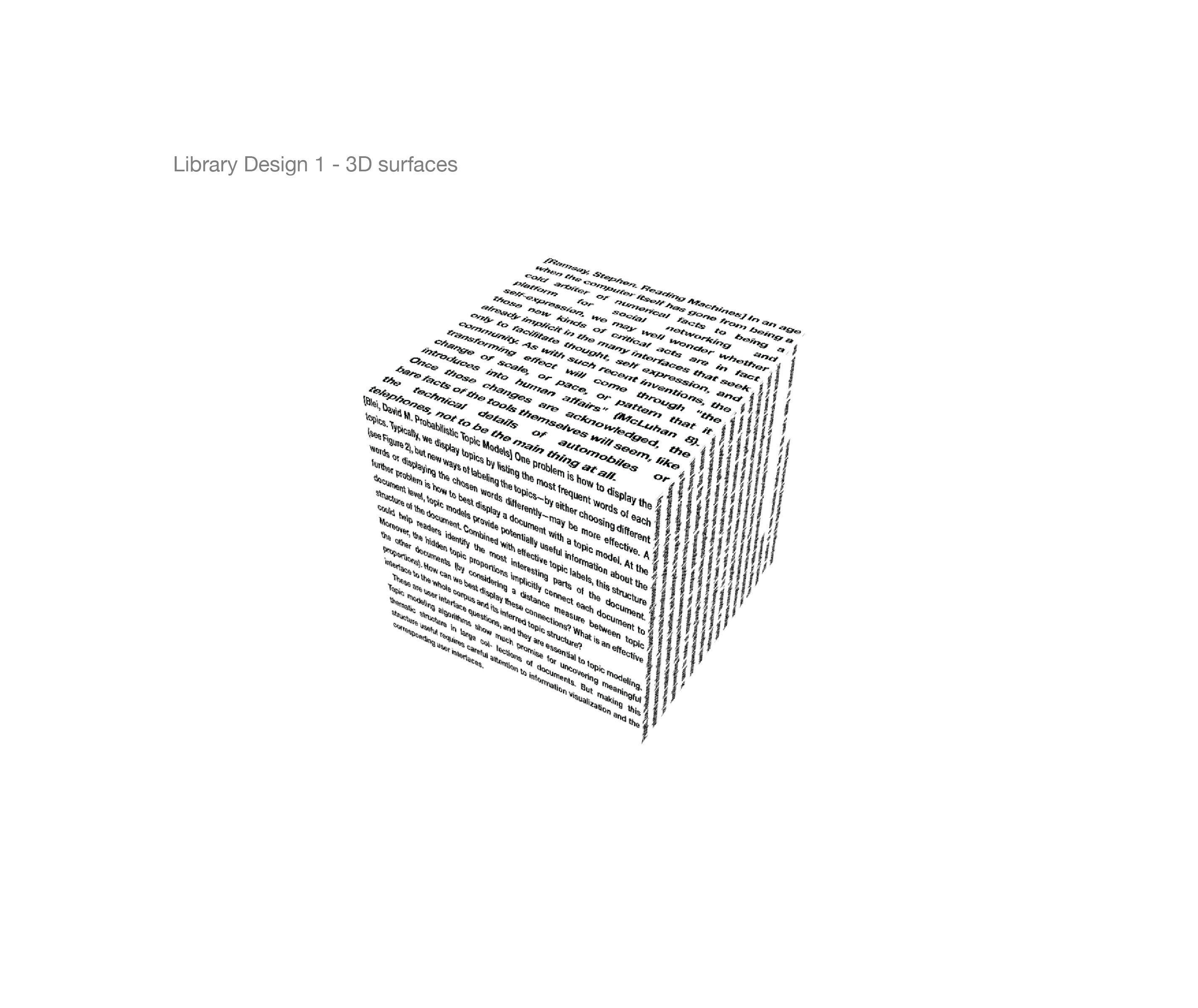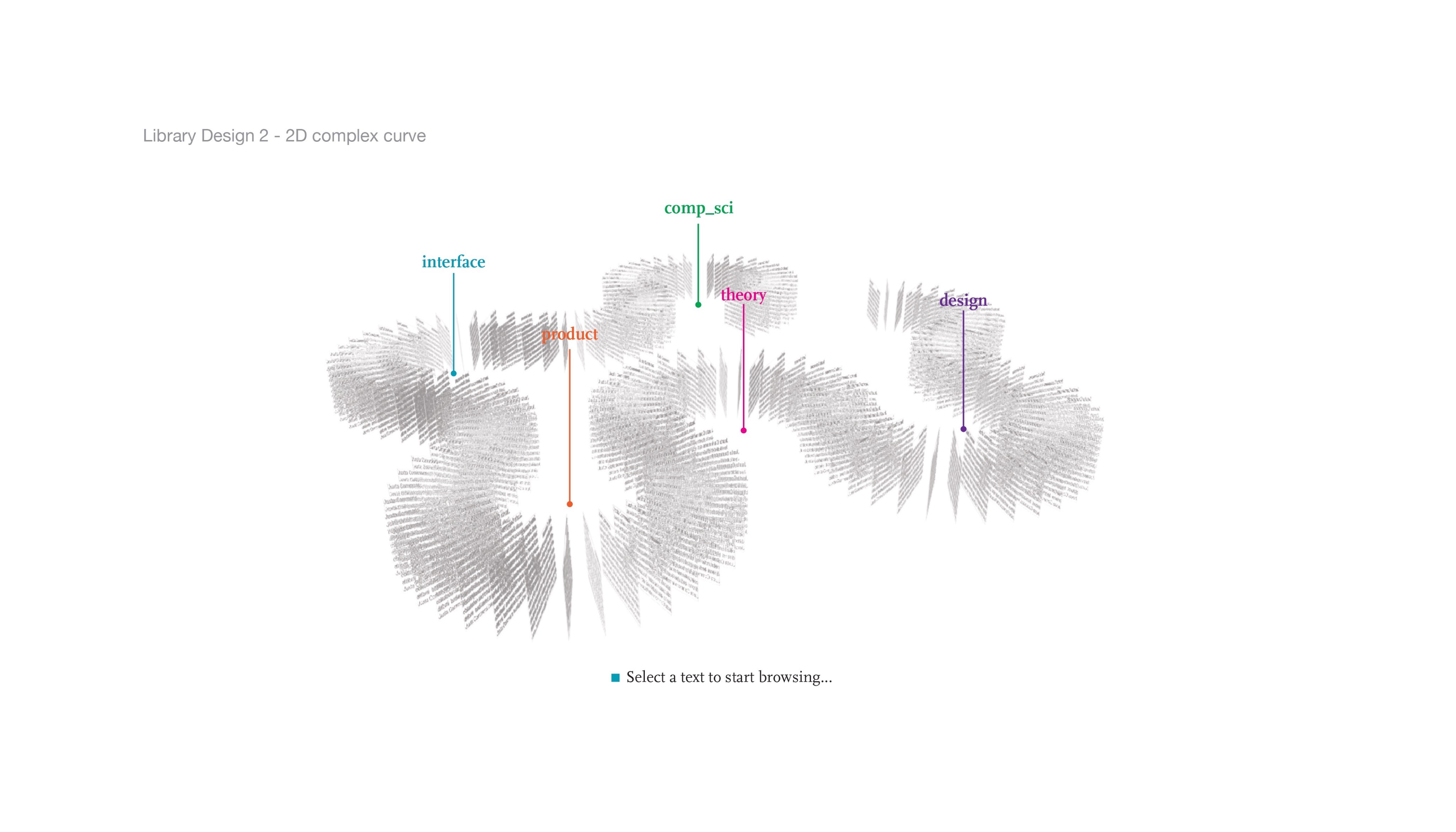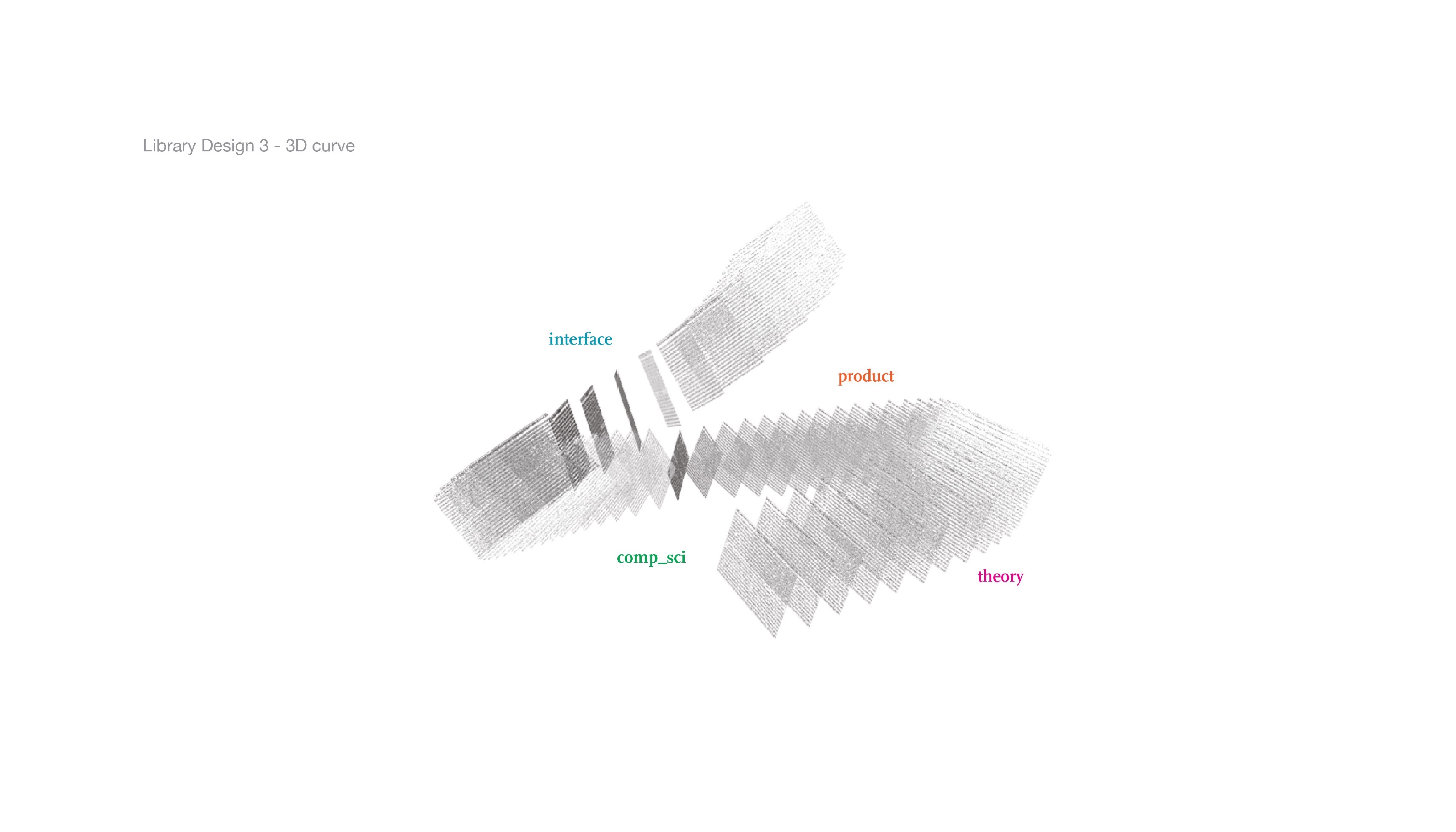Text in N-Dimensions
// UI Design Research with Anne Burdick
The project aims to re-invent the traditional reading interface for digital humanity scholars based on Jerome McGann’s idea: a “dynamic space that can be organized in an indefinite number of perspectives.” The idea is that the reader will be able to "wander" through a field of text content, and by taking different perspective to view this field of content, derive different threads of argumentation.
HTML5 Demo
Please play with the demo below by drag/zoom with mouse, or move viewport with arrow keys!
| Year | 2015 |
| Mentor | Anne Burdick |
| Role | Designer, Design Researcher |
The Project
The concept of a multidimensional interface is not yet fully visualized in the above demo. This is an on going project that is a facet of Anne's long term project, Micro Mega Meta, which looks at the future of humanities research and scholarly production.
Design Brief
In The New Republic of Letters, Jerome McGann proclaims, “We are not even close to developing browser interfaces to compare with the interfaces that have evolved in the past 500 years of print technology.” (118) He writes about print textuality and the role of graphic design in the creation of complex, non-linear, spatialized argumentation. His argument is that the social, historical, situated textual interpretations that we have inherited from philology have yet to be fully developed as a form of computational textuality. This is due in part to the mechanisms for text mark-up that rely upon nested hierarchies and ontologies that disallow movement within a text in multiple directions. McGann therefore calls for a digital spatial textuality that is autopoeitic. The catch is that its realization requires the development of entirely new computational paradigms.
As designers, we cannot create those paradigms but we can imagine what they might make possible, how they would look and feel. We can ask the question, what does it mean to read texts in a field of relationships from a clearly identified position inside of the field itself? What does it mean to “carve a new path through the document space?”(Ramsay, 80) or the textual condition? or the discourse field?
Video Demo
Concept > Physical > Digital
Although we set out to create a digital interface, experimenting with physical prototype was still remarkably illuminating. By quickly cutting slots on text cards printed on transparent acetate, I was able to put together a “text card field” that demonstrated an understanding of Anne’s idea and enabled more nuanced discussions.
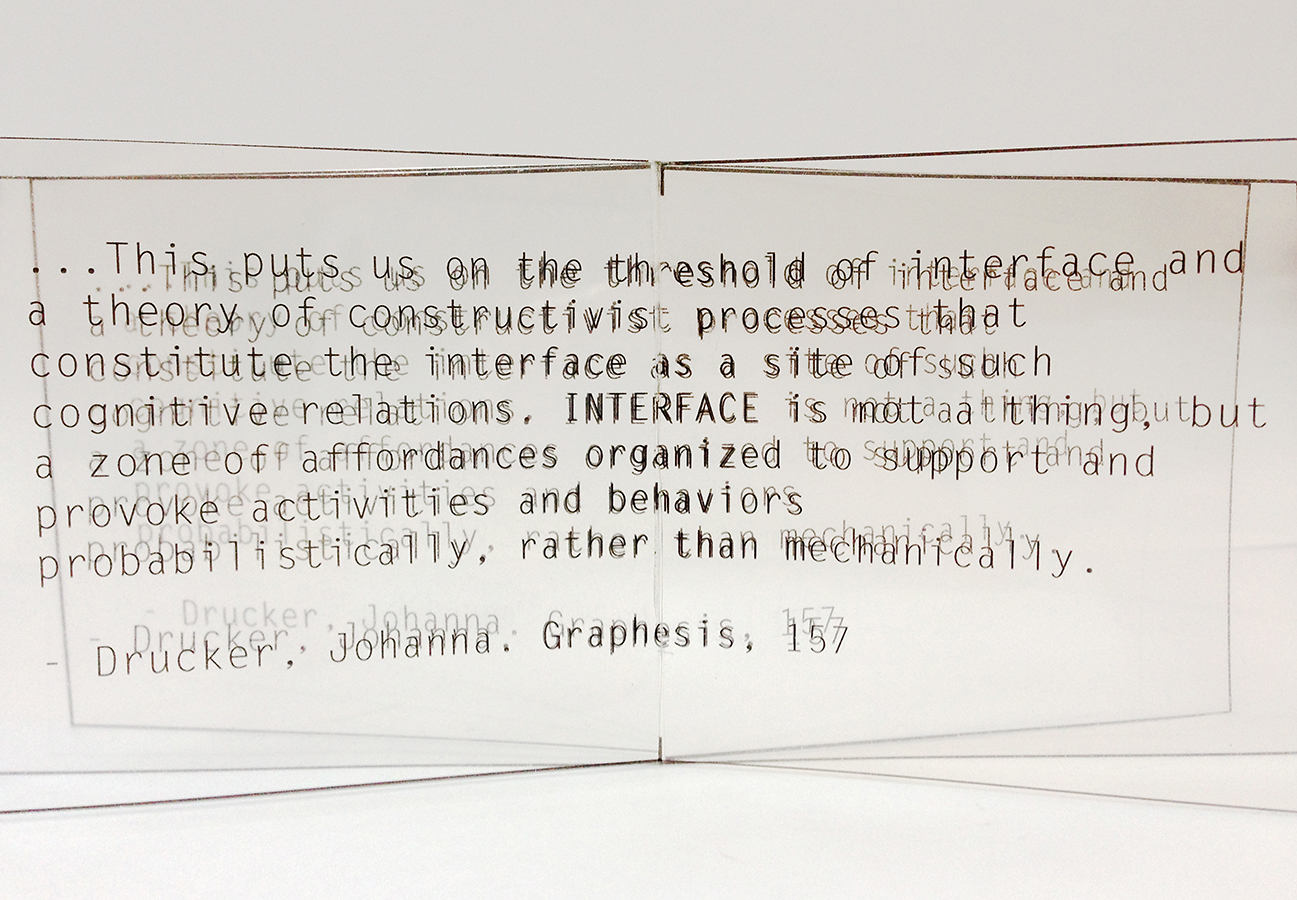
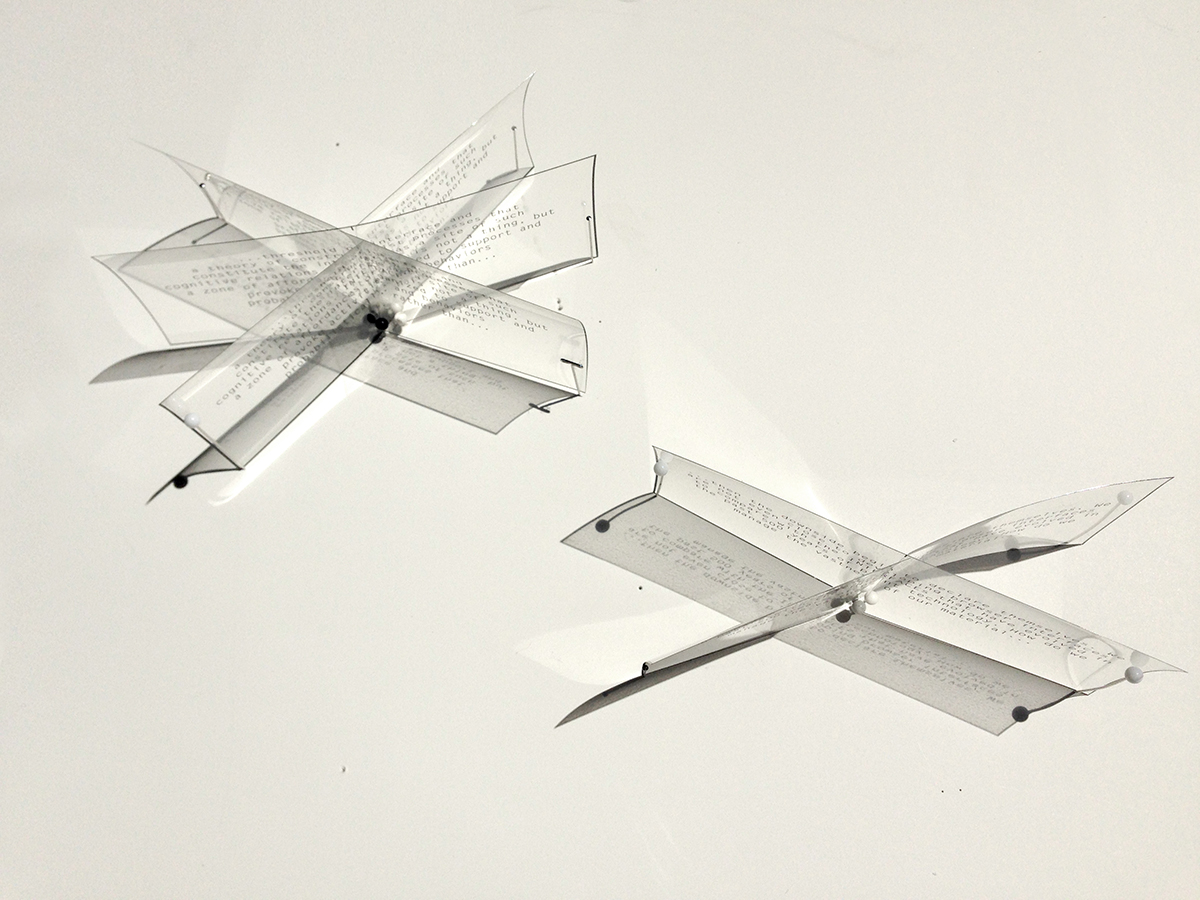
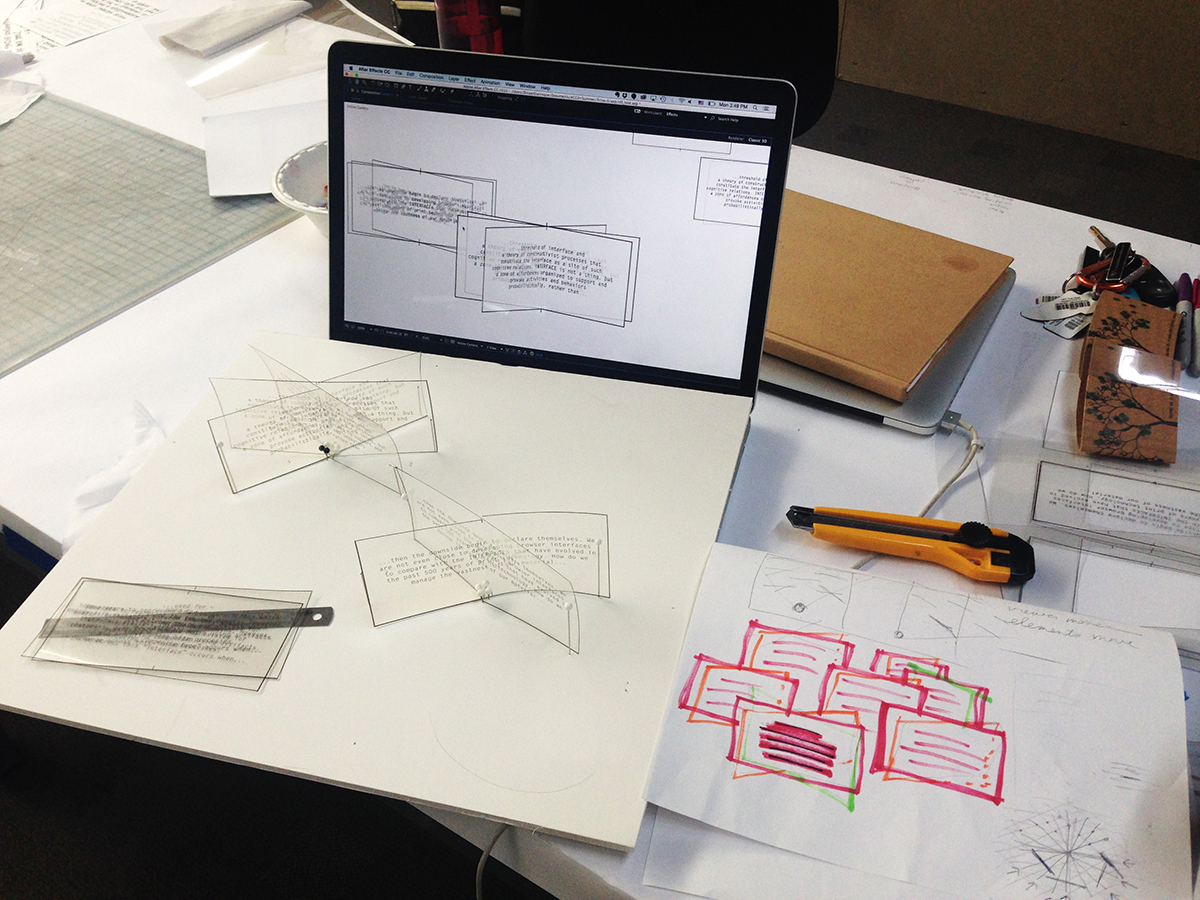
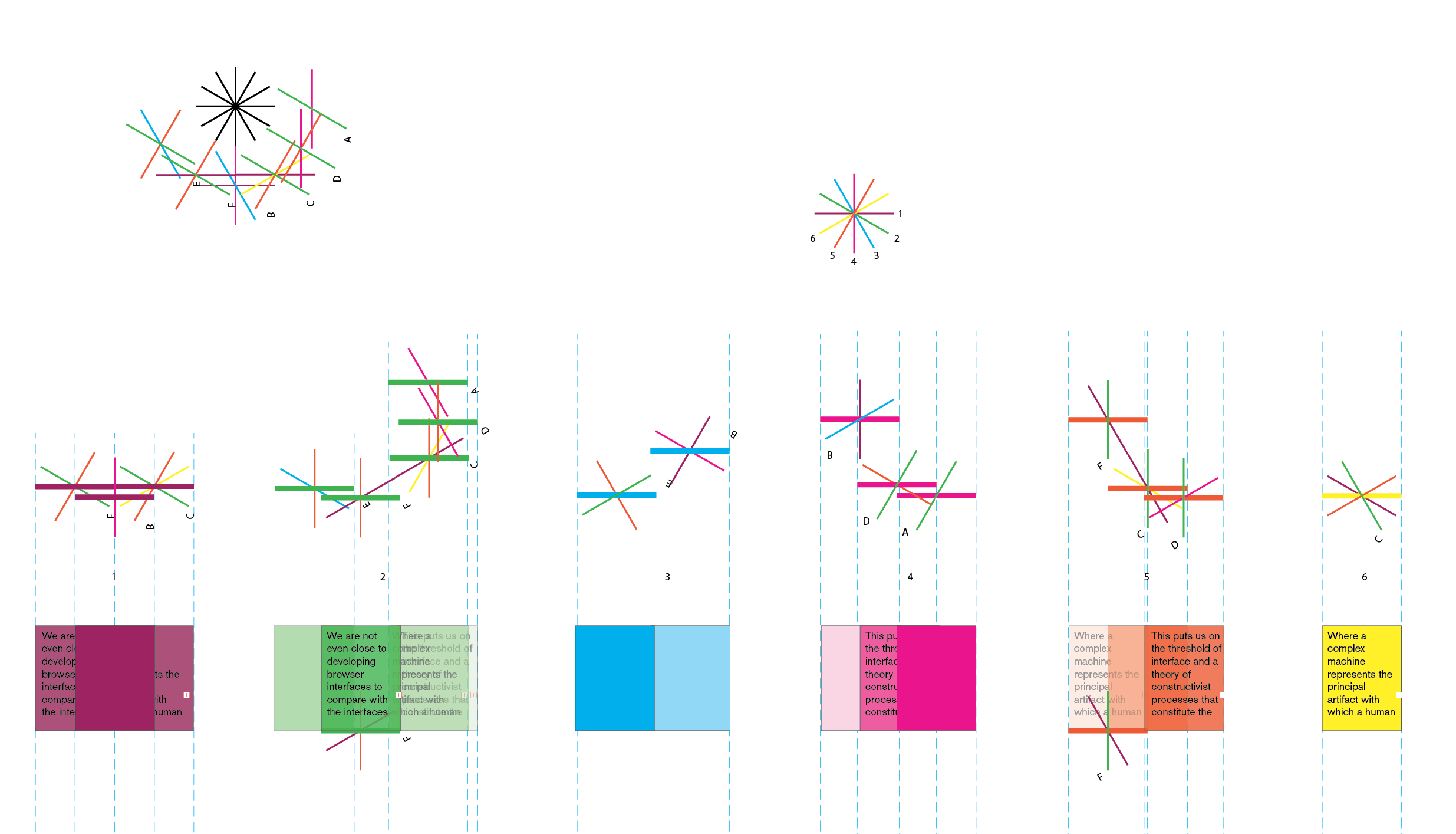
Alternative Interfaces
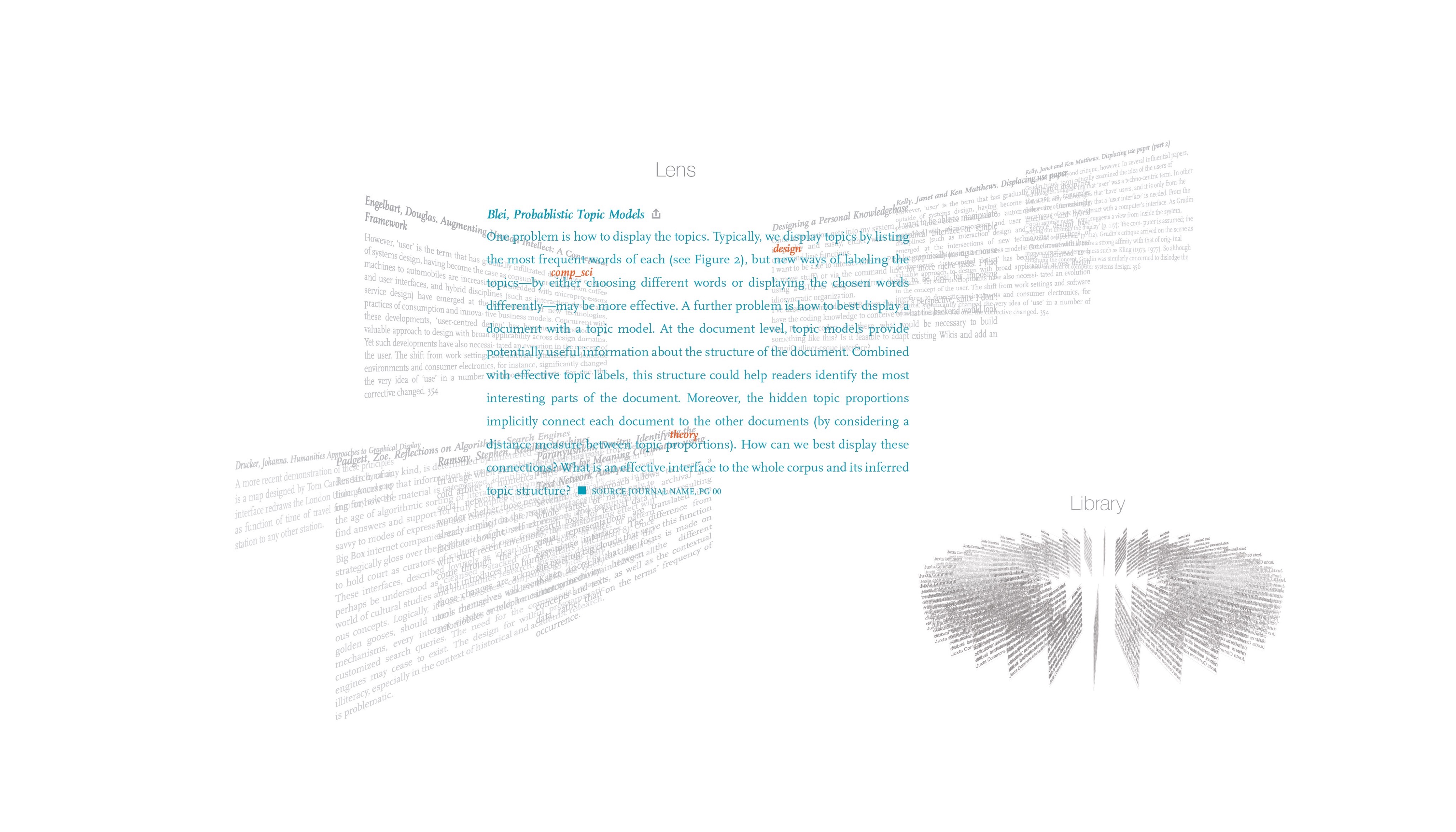
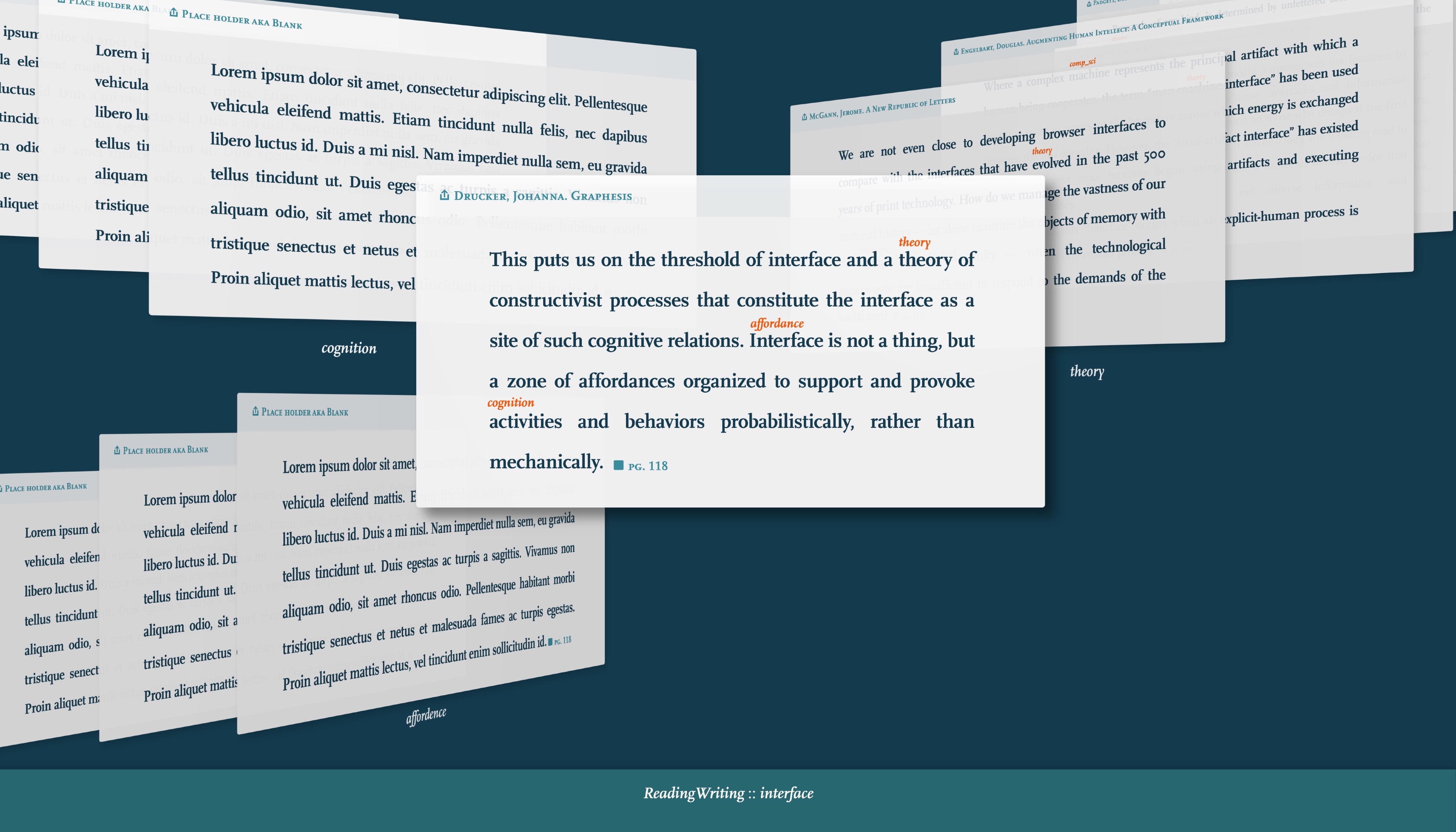
The N-Dimensional Library
A less explored area is designing the organization logic of a text corpus. Inspired by the three dimensional protein folding, where certain points on the chain attract and certain points repel, I imagined the texts in the corpus may also exhibit this attract-repel property in relation to each other, forming a 3-dimensional library.
